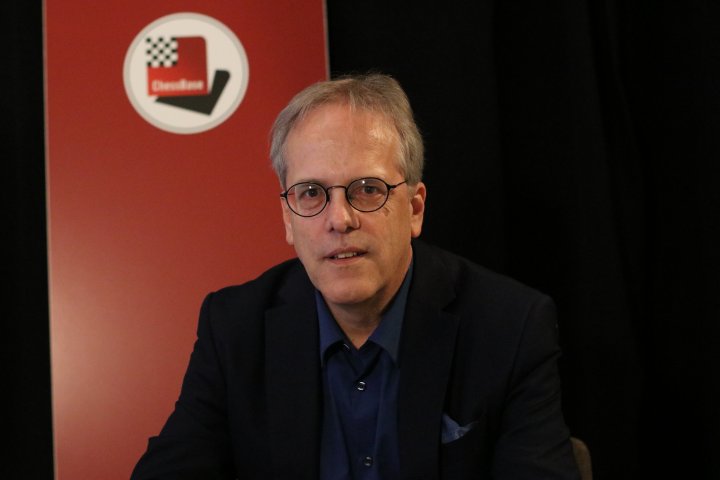


Key Concepts of Chess - Pawn Structures Vol.1 and 2
In this two-part course the emphasis will be on typical pawn-structures.
Robert James Fischer was born in Chicago in 1943. His mother, Regina Wender Fischer, was an American citizen of Polish-Russian-Jewish origin, married to Gerhard Fischer. Paul Felix Nemenyi, a Hungarian-Jewish mathematician, was later identified as Fischer's biological father, but Bobby probably never met him.
Bobby learnt chess at the age of six from his sister Joan, who liked to keep him occupied as he was a difficult child, perhaps because of his high intelligence. He was fascinated by the game and soon his remarkable results began to attract attention.
It was particularly remarkable when, at the age of thirteen, he defeated the American master Donald Byrne. This game was considered the game of the century, which is of course what we are going to discuss in this video!
Later Fischer also defeated Robert Byrne, Donald's brother, in a more than brilliant game.
In 1957, at the age of fourteen, Fischer won the US championship for the first time and became the youngest US champion of all time. Fischer had a brilliant chess career, finishing first or near the top in almost all the tournaments he played, often with brilliant games.
However, he was not the easiest person to deal with and because of his capricious behaviour and stubbornness he sometimes withdrew from tournaments - even when he was leading. From 1957 to 1966, Fischer won all eight of the US Championships he entered. The most remarkable was in 1963, when he went home with a score of 11 out of 11.
In those days, the World Championship cycle lasted an average of three years. To compete for the world title, you first had to qualify for the "interzonal" tournaments, of which there were two. Since the US Championships counted as zonal tournaments, winning the title gave Fischer the right to play in the interzonal tournaments.
In 1958 Fischer played in the Interzonal Tournament in Portorož, Yugoslavia, where, to the surprise of many, he finished sixth and qualified for the 1959 Candidates Tournament held in the former Yugoslavia. He also became a grandmaster, the youngest in history until Judit Polgár broke the record in 1991.
But the 1959 Candidates Tournament was a disappointment for Fischer, who finished sixth (out of eight), partly because he lost four times to Mikhail Tal.
In 1962, however, Fischer got his revenge by winning the Interzonal Tournament in Stockholm convincingly and qualified for the Candidates Tournament in Curaçao the same year, where Fischer started as one of the favourites.
It is a funny coincidence, but I was born in Curaçao in 1958 and my father, who was a chess player himself, took me to the hall where the eight participants played a marathon 28-round round-robin.
Unfortunately, being four years old at the time, I remember nothing of that visit...
Anyway, Fischer again failed in his mission to become the world champion's challenger, finishing fourth behind Tigran Petrosian, Efim Geller and Paul Keres. After the tournament Fischer accused the Soviet players of collusion, suggesting that they played short draws to conserve energy and even gave each other points to prevent a player of another nationality from becoming the challenger. Viktor Kortschnoi, who also played in Curacao, later expressed similar sentiments.
What was remarkable, however, was that Fischer got on well with Mikhail Tal, against whom Fischer had a poor personal record. Tal was a kidney patient and, partly due to his condition, had to withdraw from the tournament to be treated in hospital. Fischer was the only player to visit the "Magician of Riga" in hospital!
After Curacao Fischer demanded that the challenger should be determined in a series of matches rather than in a tournament. As a protest against FIDE, he also deliberately skipped the next cycle, but returned to the cycle in 1967 when he played in the interzonal tournament in Sousse. But again he clashed with the organisers and withdrew from the tournament, even though he was leading with 8½ out of 10, a story which is described in some detail in this article.
The diagram below shows the crucial position of the above-mentioned game D. Byrne - B. Fischer. Black seems to lose the knight on c3, but what did Fischer do to save his knight and win the game?
Master Class Vol.1: Bobby Fischer
No other World Champion was more infamous both inside and outside the chess world than Bobby Fischer. On this DVD, a team of experts shows you the winning techniques and strategies employed by the 11th World Champion.
Grandmaster Dorian Rogozenco delves into Fischer’s openings, and retraces the development of his repertoire. What variations did Fischer play, and what sources did he use to arm himself against the best Soviet players? Mihail Marin explains Fischer’s particular style and his special strategic talent in annotated games against Spassky, Taimanov and other greats. Karsten Müller is not just a leading international endgame expert, but also a true Fischer connoisseur.
This week’s show (for Premium Members only)